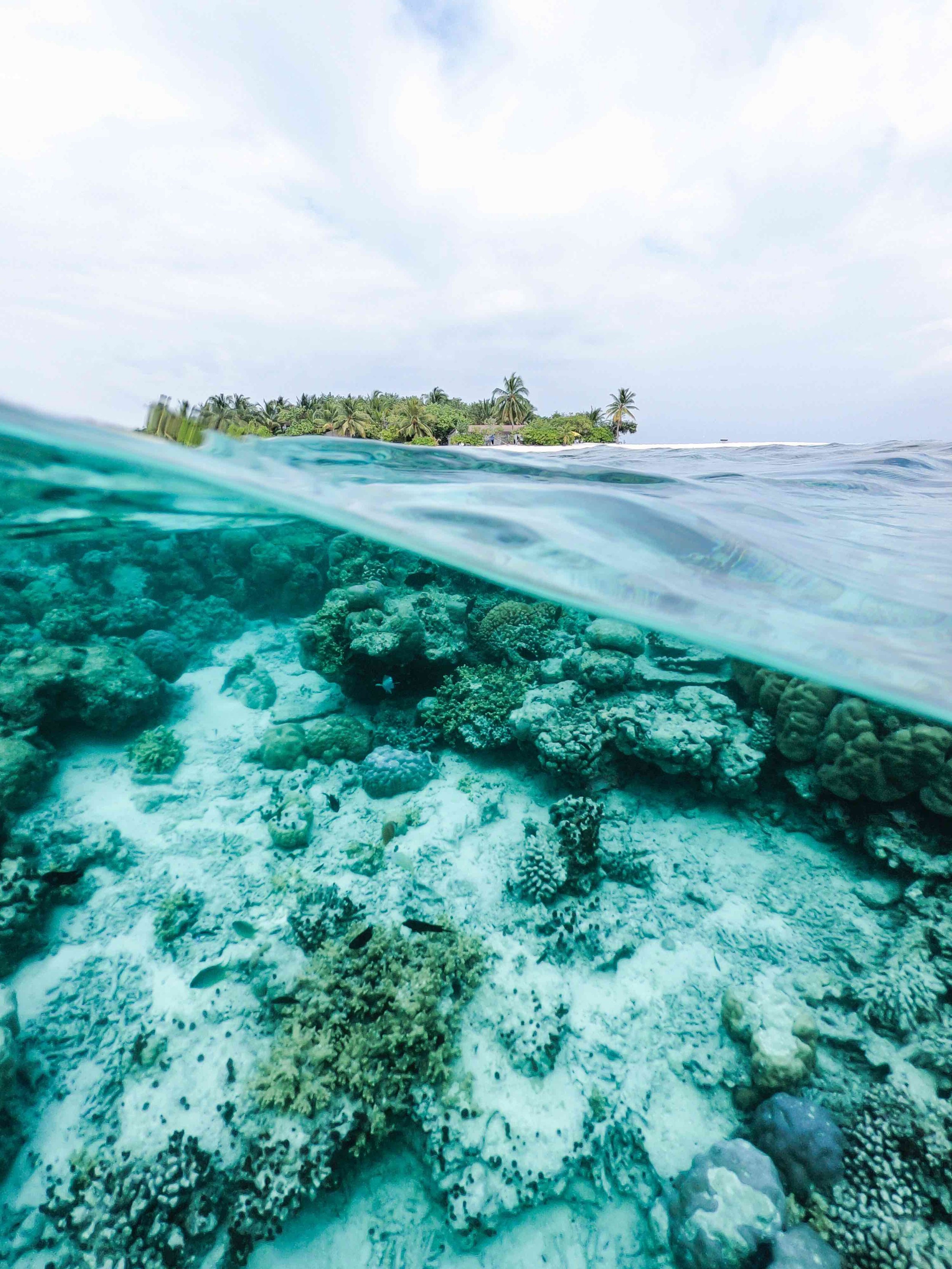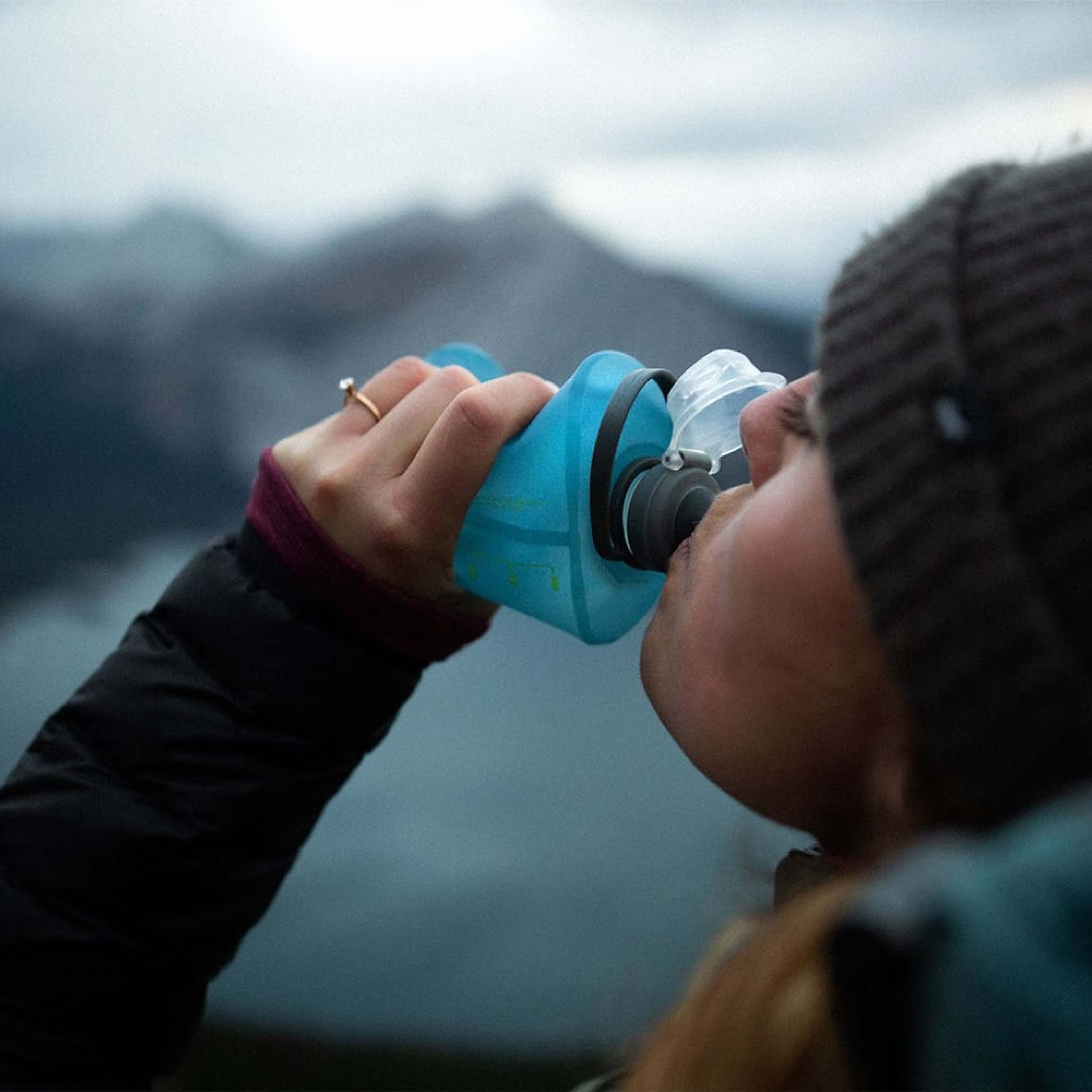11 Sunscreens That Are Good For You and Less Bad For The Sea
Saltwater Journal is reader supported.
When you buy through our links we may earn an affiliate commission (at no extra cost to you)
Let’s be honest. The ‘best’ ‘reef safe’ sunscreen for the ocean is none at all — no contamination whatsoever from our products. But realistically, we love swimming in the sea and being in and part of the ocean is a way of life and enjoyment. Sadly, research has shown that every year an estimated 14,000 tons of sunscreen ended up on coral reefs across the world. So, we each need to be smarter about what we’re putting on our skin and taking into the water, to minimise damage to delicate marine ecosystems.
We know sunscreen plays a vital role in helping to protect our skin from skin cancers and (try to!) avoid premature ageing. That means wearing sunscreen daily, all year round. Because even in winter the UV rays can be harsh, and when you’re on the ocean with reflected light, it’s intensified even more. Sun protection isn’t just about sunscreen though. Wearing sun-protective clothing, finding shade and only using sunscreen on exposed skin goes a long way to reducing the amount of sunscreen used and gives you the best skin protection.
If you spend a lot of time at the beach and in the water (which I’m picking you do) — you’ll want to buy a sunscreen that you know is least damaging for the ocean. It’s important that sunscreen doesn’t include ingredients that are going to be harmful to your body, or to coral reefs and marine life. That doesn’t sound like rocket science but with so many different sunscreen products on the market, and with so many brands claiming to be ‘eco-friendly’ it can be confusing to know which ones are actually living up to their claims, and which are just hiding behind clever marketing and packaging promises.
Added to the mix are research studies that show even some mineral ingredients such as zinc oxide and titanium dioxide in nano-particle form may cause coral bleaching, although as Smithsonian Magazine summarises, there are conflicting views as to the size of data studies and interpretation of results. So, are there any safe sunscreens we can use? According to the Skin Cancer Foundation, one in five Americans will develop skin cancer by the age of 70 — there’s no doubting the importance of sunscreen. There are definitely some mineral based sunscreens that have less impact on human health and ocean life than others.
I’ve rounded up the latest research and information from the experts such as Save the Reef to answer some important sunscreen questions. It’s clear that there are definitely ingredients to avoid and many of these are found in popular sunscreens. To help keep life simple, I’ve picked the 11 best non-nano mineral, kid-friendly sunscreens that are good for you, and not as bad for the sea (but I’ll keep watch on the science as research develops).
You can trust that these sunscreens meet these important categories:
What’s actually in sunscreen that’s bad for the ocean?
The majority of sunscreens on the market contain harmful ingredients such as oxybenzone and octinoxate. Traces of these have been found in many marine species from white fish to trout, mussels to coral, mahi-mahi, dolphins, sea turtle eggs, and migratory bird eggs. Sunscreen pollution from these chemicals is a contributing factor in coral bleaching and has been banned from use in Hawaii since 2018.
What ingredients should I avoid?
The Haereticus Environmental Laboratory and Steam2Sea have an extensive list of harmful ingredients to avoid in your sunscreen and body products. The main chemicals to avoid are:
cylcopentasiloxane / cyclomethicone
methylisothiazolinone
octoxinate / octyl methoxycinnamate
camphor derivatives
4-methylbenzylidene camphor
Octocrylene
Any form of microplastic sphere or beads.
Any nanoparticles like zinc oxide or titanium dioxide.
Para-aminobenzoic acid (PABA)
parabens:
Methyl Paraben
Ethyl Paraben
Propyl Paraben
Butyl Paraben
Benzyl Paraben
cinnamates
Triclosan
It is time consuming cross-referencing ingredients on your products but this is the best way to know whether a sunscreen or product is safe to use.
The 11 sunscreens listed below are all free of these ingredients.
Ok, I’m chemically overwhelmed — can you please make this simple?
Totally! Here’s the key things to remember when choosing your next sunscreen.
Avoid sunscreens which rub in ‘clear’ to your skin*.
These work by being absorbed into your skin and absorbing UV rays. Common sunscreen brands like Neutrogena, Sun Bum, Coppertone etc use harmful sythentic ingredients that allow the sunscreen to be completely rubbed into your skin – so you can’t see it when it’s on.
*Skinnies sunscreen (below) is an exception to this — they use a waterless Organogel technology, so it goes on clear, and isn’t white or greasy but this layer isn’t absorbed — it stays on top of your skin.
Choose non-nano mineral based products that still show up on your skin when applied.
In most mineral sunscreens, titanium dioxide or zinc oxide is the primary active ingredient and is the safest, most effective sun protection out there. Look for sunscreens that include titanium or zinc as these are safe and stay on the surface of your skin to reflect UV rays. You might not like the look quite as much, but it’s far healthier for your body and the ocean.
Avoid nanoparticles
Some sunscreens now include nanoparticles in their formulas (even some zinc mineral based ones) to stop the white look and make the sunscreen appear clear on your skin. The effects of these tiny molecules on the body’s circulatory and immune systems are still being studied for their health risks but they are highly toxic to marine life and should be avoided.
Skip the aerosols
Aerosol sunscreens may seem less messy, more convenient and easier to apply but with an aerosol spray, you’re inhaling microscopic ingredients and they’re not an environmentally friendly packaging option.
So in summary, you want to look for sunscreen products that contain solid-particle, non-nano titanium dioxide or zinc oxide. Here’s the best 11 sunscreens I found…
People4Ocean sunscreen and zinc sticks (SPF 50)
Instead of trying to hide your sunscreen, why not embrace the beach look with this awesome blue zinc stick? Available in different tints and creams, this Aussie made People4Ocean product is one of the best mineral sun sticks on the market, with carbon conscious packaging and investment in reef conservation initiatives worldwide.
2. Manda Organic sun creme (SPF 50)
From the wood of a tree native to Myanmar, Thanaka has been used for over 2000 years as a natural sun protectant that preserves and beautifies the skin. With its anti-inflammatory, anti-aging and moisturizing properties, Thanaka is the inspiration for MANDA sun protection. This is a lovely creamy, high quality lotion.
3. Manda Organic sun paste (SPF 50)
Prefer a cute wooden pot to throw in your beach bag? Manda gives you it’s brilliant organic protection in a paste — a little of this goes a long way. This smells deliciously good enough to eat with a coconut scent, and it contains cocoa which adds a lovely soft colour tint. At SPF 50, this is natural skin protection at its best.
4. Stream2Sea water resistant (SPF 30)
This Stream2Sea mineral based sunscreen offers 80minutes of high-performance protection in the water. Great for all in-water action — you can dive, snorkel and surf knowing this is staying on your skin, and isn’t damaging marine life. Check out the rave review of this sunscreen and the comprehensive test on this product by Tropical Snorkelling.
5. Skinnies Conquer performance sun gel (SPF 50)
This New Zealand made sunblock with broad spectrum protects from UVA & UVB rays coverage. It’s slightly more expensive than some other brands but that’s because it ticks all the right boxes — it’s the ultimate sunscreen for being in the ocean and on outdoor adventures. It’s not diluted with water so you only need a small amount and it feels amazing on your skin. Plus they use a waterless Organogel technology, so it goes on clear, dries fast and isn’t white or greasy. And it’s vegan friendly!
6. Raw Love sunscreen (SPF 35)
Feeling the love and aloha vibe? Love the scent of fresh lavender, peppermint and eucalyptus? This one’s for you…Raw Love’s broad spectrum, all natural, mineral sunscreen is water resistant for 40minutes and made by those who love the ocean. They use certified organic plant based ingredients to provide luxury protection for your skin. Plus, their lip balm range is just as good!
7. Raw Elements tinted face stick (SPF 30)
Looking for a sunscreen to blend in more to a sun kissed tan? Raw Elements offer this tinted mineral sun stick that’s safe for all ages and is soy, gluten and nut free! You can even apply it in the water — so if the kids are racing to get back out there but you need to reapply their sunscreen — you can whip it on them without towelling off and keep everyone happy. Comes in non-tinted version too, check it out!
8. All Good sport face and body sunscreen (SPF 30)
This sporty sunscreen is lightweight and is suitable for sensitive skin. Made from zinc oxide and botanical ingredients, All Good sunscreen will stay on while you sweat onshore and swim offshore. This creme is non-greasy and gives great coverage with excellent water resistance.
9. Butterbean Organic (SPF 30)
Buying Butterbean Organic you can be confidant that you are getting the highest quality, pure, and sustainable products that have been naturally sourced and healthy for both people and the planet. This beautiful coconut scented sunscreen comes in a pot or easy apply sports stick. They also do a pump spray bottles with refill packs which are economical.
10. Kimberley Sayer Ultra light organic (SPF 30)
Kimberley Sayer has produced this great broad spectrum SPF 30 day wear sunscreen which is ultra light and moisturising. It’s ideal for use under make-up and it contains Lemon Oil to detoxify the skin, minimize oil production and dry up acne and zits. Derived from minerals Titanium Dioxide and Zinc Oxide this creme offers complete protection from the sun without irritating even the most sensitive skin.
11. Smidge Suncare
I saved the best for last! Made with just 7 naturally-derived ingredients, Smidge Suncare is safe for children, it doesn't leave a white cast and is especially well suited for people with sensitive skin. It contains zero water so a little bit goes a really long way — my tin seems to just last and last.
Smidge is vegan, free of chemical UV filters and is packaged in a recyclable plastic-free tin. This SPF 30 sunscreen meets the Australia New Zealand Standard 2604:2021. Made in Aotearoa,New Zealand. Read why this is the Best Mineral Sunscreen for New Zealand!
Top tips to look after your skin from the sun
One of the best things we can do for our friends and family is to help keep their skin protected too. Remind them to put sunscreen on, and keep spare hats and creams handy.
Find shady spots to keep out of the sun — especially during peak sun hours between 10am to 4pm, when UV radiation is at its strongest
Wear a hat (here’s the best sunhats for sailing) and stay covered under protective clothing
Wear a sun-shirt or rash vest in the water – think how much less product you’ll need to apply!
Wear sunscreen daily — apply 20 minutes before heading outside
Reapply sunscreen regularly — even those that are water resistant
Check your sunscreen expiry date and how it looks and smells to ensure it’s always fresh and still offering sun protection.
Drink lots of water and keep hydrated
In Summary
Small positive choices we each make daily to stay out of the sun and wear products that are least harmful can make a difference. And as research develops, we’re empowered by more knowledge to make better decisions. For today, enjoy being outdoors — enjoy the ocean and sunshine and stay sunsmart.
References
Consumer Reports
Save the Reef
National Ocean Service
Safe Sunscreen Council
The Ocean Foundation
Smithsonian Magazine




































